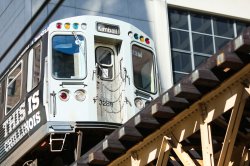Freezdriedengineer
TPF Noob!
Is there a benefit to having fast glass when you are shooting with mid-range apertures?
Follow along with the video below to see how to install our site as a web app on your home screen.

Note: This feature currently requires accessing the site using the built-in Safari browser.
But the improved sharpness of the stopped down fast lens is more about the quality of the optics in the lens than the stopped down aperture.It is often sharper than a lens would be that was wide open at those same apertures, yes.
No.Is there a benefit to having fast glass when you are shooting with mid-range apertures?
No.Is there a benefit to having fast glass when you are shooting with mid-range apertures?
The advantage of fast glass is that you can have a very open maximum aperture.
However, in order to have the option to open the aperture this wide, the demands on the lens design increase. This is why usually slower glass tends to be better than fast glass, at the same aperture.
Again, this is a tendency, not a rule set in stone. Zooms have much higher demands on lens design, too, and yet there are exceptional zooms that perform better than some primes. Likewise, fast glass is often a LOT more expensive than slower glass, thus the tolerances can be tighter, the material quality can be made higher, etc.
Is there a benefit to having fast glass when you are shooting with mid-range apertures?
OP never mentioned shooting wide open.Is there a benefit to having fast glass when you are shooting with mid-range apertures?
Just because you have fast glass doesn't mean you should shoot wide-open. That's like buying a car and only driving WOT.
OP never mentioned shooting wide open.Is there a benefit to having fast glass when you are shooting with mid-range apertures?
Just because you have fast glass doesn't mean you should shoot wide-open. That's like buying a car and only driving WOT.
No.Is there a benefit to having fast glass when you are shooting with mid-range apertures?
The advantage of fast glass is that you can have a very open maximum aperture.
However, in order to have the option to open the aperture this wide, the demands on the lens design increase. This is why usually slower glass tends to be better than fast glass, at the same aperture.
Again, this is a tendency, not a rule set in stone. Zooms have much higher demands on lens design, too, and yet there are exceptional zooms that perform better than some primes. Likewise, fast glass is often a LOT more expensive than slower glass, thus the tolerances can be tighter, the material quality can be made higher, etc.
I have never in my life shot with a slower lens that was better than a fast lens at the same aperture, without the slower lens being worth at least 10x as much money.
For example, yes, the Canon 24-70L f/2.8 is probably sharper at f/3 than the Canon 50mm f/1.8 is at f/3. But also costs eighteen times as much. And even then, I'm not even actually sure that's true, since despite using both, I've never really done side by side comparison. Just sort of talking intuitively. It might actually turn out the opposite even despite 18x cost. I wouldn't be terribly surprised if it did. It always does whenever I do do that with any lenses.
Within any reasonably close comparison of equal classed lenses whatsoever (such as the 70-200 f/4 @4, versus the 70-200 2.8 @4), the faster lens is better at the same aperture.
Now, that might very well be because they just tend to have nicer optics all around, as Keith suggested. I'm not suggesting it is some magical optical law or anything. But it is still certainly true in practice pretty much always, for whatever reason it is.
Sorry was not intending to call you out on something. I know sometimes when reading the posts people sway from the original post.kind of a Chinese whispers thingyOP never mentioned shooting wide open.Just because you have fast glass doesn't mean you should shoot wide-open. That's like buying a car and only driving WOT.
True, but I was suggesting that, yes, there's a benefit to shooting mid-apertures on fast glass. There's more than "a" benefit. Sharpness, dof control, and ambient light control comes to mind.
My analogy was bad and my response was more of a generality.
Sorry was not intending to call you out on something. I know sometimes when reading the posts people sway from the original post.kind of a Chinese whispers thingy
What?

No.Is there a benefit to having fast glass when you are shooting with mid-range apertures?
The advantage of fast glass is that you can have a very open maximum aperture.
However, in order to have the option to open the aperture this wide, the demands on the lens design increase. This is why usually slower glass tends to be better than fast glass, at the same aperture.